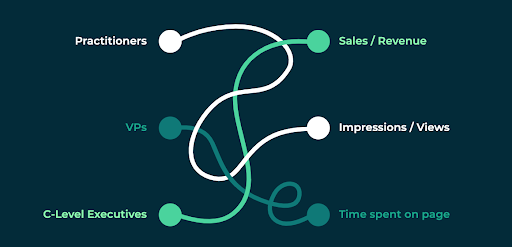Navigating PPC advertising can seem daunting, with the fear of not getting the desired results. Yet, investing money is crucial for revenue, and digital platforms give us valuable data to guide our investments wisely. In the world of Google Ads, understanding the benchmarks for cost per lead is key.
Setting standards with advertising benchmarks is essential, providing clear goals to strive for. When it comes to Google Ads, numerous metrics demand attention, with cost per lead standing out as a crucial metric. This article dives into what cost per lead entails and outlines effective strategies to optimise this vital metric, ensuring your financial investment pays off.
Understanding the CPL Formula
CPL it's a vital PPC metric that gauges the investment required to turn an advertisement viewer into a conversion. It will become a critical marketing KPI to monitor your marketing strategy and set your campaigns up for success. Also referred to as cost per action or cost per conversion, this metric assesses the effectiveness of an ad based on the desired actions it prompts.
Calculating the cost per lead involves a straightforward formula: divide the campaign expenditure by the number of conversions. For example, if you spend $500 and garner 50 leads, your CPL would be $10. Lowering CPA involves identifying areas where conversions can rise or costs can be trimmed. However, it's not a simplistic, two-dimensional challenge.
Within your Google Ads accounts, you're dealing with numerous campaigns and keywords, each driving distinct value for the business. The maturity of campaigns, conversion rate optimization, budget, and available resources all come into among many other variables when deciding your CPL. Therefore, reducing your CPL likely requires a multifaceted approach, addressing a range of activities across various campaigns within your account. Let's delve into this complexity.
What is a ‘good’ cost per lead?
Determining an acceptable cost per lead will largely depend on the industry you operate in. What's considered a "good" cost per lead can vary significantly in other industries as opposed to yours. Take, for instance, the Business Services sector as shown below which averages around $130 per lead while IT, Computer and technical Services and Health care and Medical sectors cost upwards of $165 per lead. On the flip side, in Education, Retail, Telecom and Non-profits it tends to stay below $55.
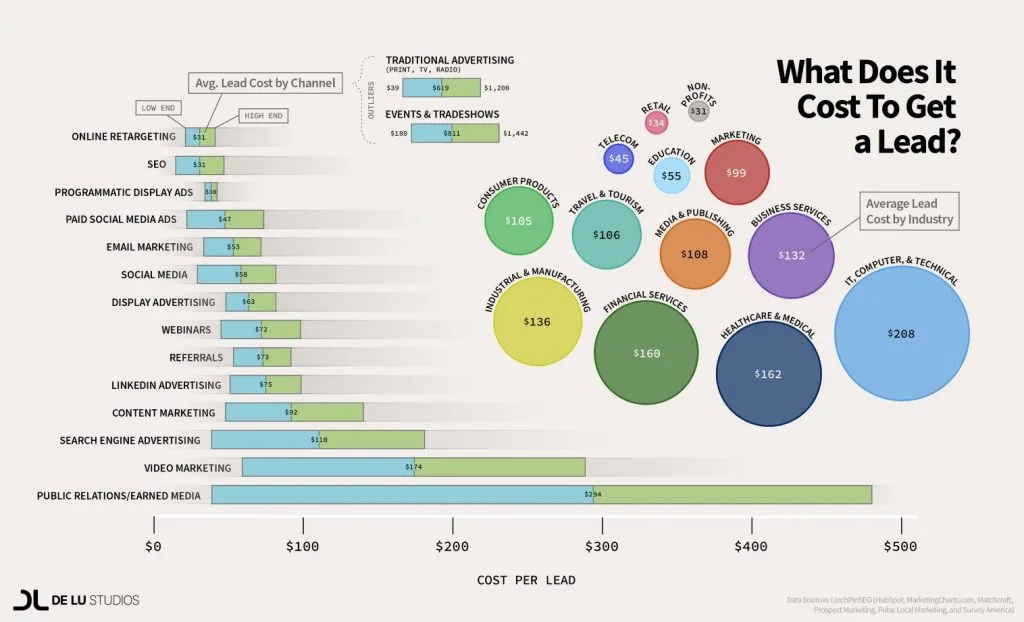
Additionally, as you explore your campaign results, you'll notice variations in Cost Per Leads (CPL) across keywords and campaigns. This discrepancy arises because some offers prove more lucrative than others, highlighting the dynamic nature and volatility of lead generation costs.
Strategies to Reduce Your Google Ads CPL
As stated above, there's no single approach that will work to cut down the cost per lead for all accounts. It requires boosting conversions and/or reducing costs, and there are multiple ways to achieve this. Let’s look at one of those below.
1. Closely monitor our ‘limited by budget’ campaigns
One technique to decrease your expenditures is to reduce your bids, which is related to campaigns that are "limited by budget". This is a campaign status in Google Ads that means your bids are sufficiently high for you to take part in a certain amount of auctions, however your budget does not permit you to participate in that many auctions.
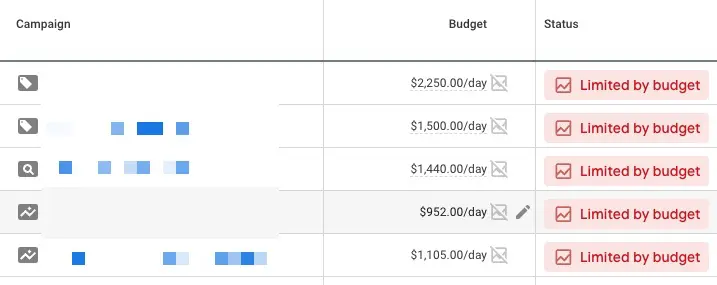
For campaigns ‘limited by budget’, you might consider:
- Increase Budget: If the campaign is of high value and you have the surplus budgets, spending a little more could result in more conversions than losses. Just be mindful that if the spend increases more than the conversions, then the cost per lead will not change.
- Reduce Bids: This will allow you to enter into less expensive auctions, thereby earning you clicks at a lower price with lower ad positions. Keep an eye on the conversion volume. However, If the lower bids reduce the cost per acquisition by 30%, but the average position and conversions drop by 50%, it will not be worthwhile.
- Utilize the "Search lost IS (budget)" and "Estimated first page bid" columns to determine how much of the campaign is limited by the budget and what the bid needs to be to stay competitive.
For high value campaigns that are unconstrained by a budget, it is possible to reduce bids and expenditures in lower-value campaigns to bring down the entire CPL within the account.
2. Improve your Quality Score
The cost per click can be reduced by submitting a lower bid in the Google Ads auction. Achieving this requires a high Quality Score. The Google Ads system is structured to reward quality ads with reduced CPLs. The Google Ads auction will show a lower cost per click when the quality score is higher therefore, it is important to be aware of the three elements of Quality Score in order to improve it.
- Increasing click-through rate: Utilize ad extensions and customizers, and by refine your ad copy to boost your expected CTR.
- Landing page quality: Ensure that your landing pages are reliable and helpful to those who click on your ad. There are several landing page optimisation strategies to reduce your cost-per-click.
- Ad relevance: This implies that there is a strong connection between your keywords, ads, and landing pages. Therefore, revisit ads which have weak performance and explore the possibility of improving any of these factors.
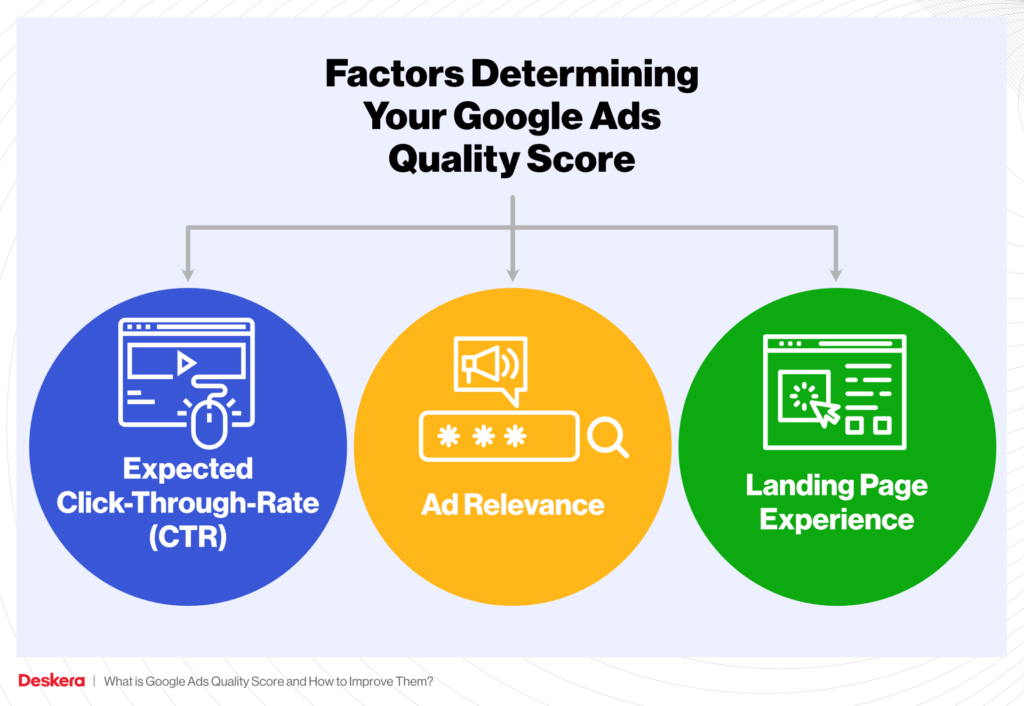
3. Structure your account for greater efficiency
The way you arrange your keywords and ads into ad groups and campaigns is referred to as your account structure. Having an appropriately designed account structure can be beneficial for reducing CPL in multiple ways:
- By making sure all your keywords, ads, and landing pages are closely related, your Quality Score will be improved with the use of single-themed ad groups.
- Your bids can be kept in check and optimized by Google with the help of automated bidding strategies that are set on the campaign level.
- Budget allocation is simpler when campaigns are organized as suggested in tip #1, since budgets are set at the campaign level.
- Grouping keywords into themed ad groups can help in recognizing CPL trends, which can then be utilized to distribute the budget depending on how the keywords in the ad groups are performing.
4. Tweak your bids
Examining your campaigns is important to ensure that there is no money wasted on campaign configurations or targeting. If you have Manual or Enhanced CPC bidding, you can alter the bids based on:
- Devices Used: Desktops, mobiles, tablets, etc.
- Demographics: Age, gender, location, etc.
- Target Audience: Detailed demographics, in-market, affinity, custom segments, etc.
- Ad Network: Search, Display, or Partner network.
- Time: Depending on your ad schedule.
If you find that conversion rates are low for certain time periods, networks, locations, or devices, it is wise to either omit those segments or change the bids for them.
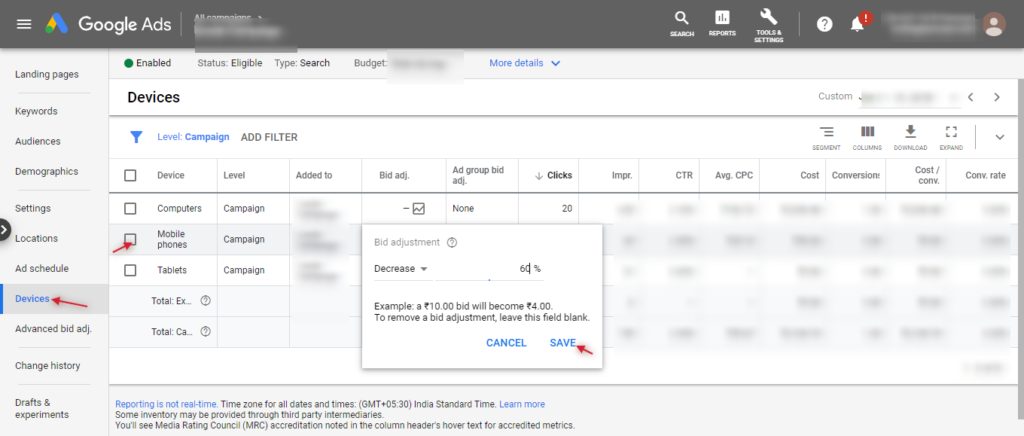
5. Change your targeting
When utilizing an automated bidding approach, the capacity to modify bids is quite restricted, although it is possible to adjust the objectives. For example, when utilizing the Max Conversions bidding strategy, one can set a target CPA (tCPA).
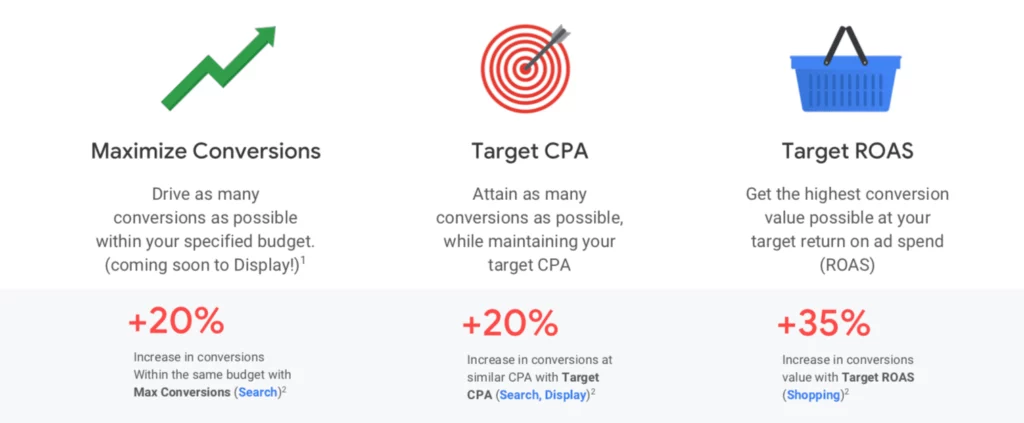
By utilizing TCPA bidding on Google Ads, you can be a great way to minimize costs provided that you are aware of the costs which you could afford to incur in order to be profitable.
However, you should ensure that your target is reasonable and realistic. If you set a target that is too low, Google may struggle to identify auctions that correspond with that criteria – which could result in fewer impressions, leading to a reduction in clicks and, ultimately, conversions, which would raise your CPL.
6. Optimize results by trimming, pausing, or changing keywords
- Nurturing your high-performing keywords is crucial for optimizing your lead generation. Identify keywords with low costs per click and high conversion rates, then allocate more budget to those successful campaigns.
- Maintaining a negative keyword list is equally essential. Utilise the search terms report to identify keywords that exhibit certain patterns like:
- Lots of clicks but low or no conversions.
- At least 3 conversions but a CPA significantly exceeding your target (3-4 times higher).
- Decent impression count but a low click-through rate.
- Pause keywords exhibiting these traits. Consider pausing keywords with CPAs double your account average, preserving historical data rather than removing them entirely.
- Ensure that keyword volume is sufficient. While improving the Quality Score is beneficial, it won't impact CPL if your high-QS keywords have minimal volume. Strike a balance between quality and quantity for effective lead generation.
7. Refresh the look of your landing pages
Though you may have the necessary landing page best practices for success, such as being relevant, useful, and loading quickly, you may need to do some landing page optimization if you're targeting the right audience but not seeing conversions. To improve, you have several optimisation options. The below landing page mock-up illustrates the key elements you could test out, which include:
- Forms: Amount of fields, what the placeholder reads, and the call to action for the submit button.
- Buttons: What colors are used, the words on them, and how many buttons.
- Copy: What emotions are being induced, how big and what colors the text is, customer reviews, and other dynamic content.
- Images: People with their reviews, pictures of the platform, and visuals with positive or negative connotations.
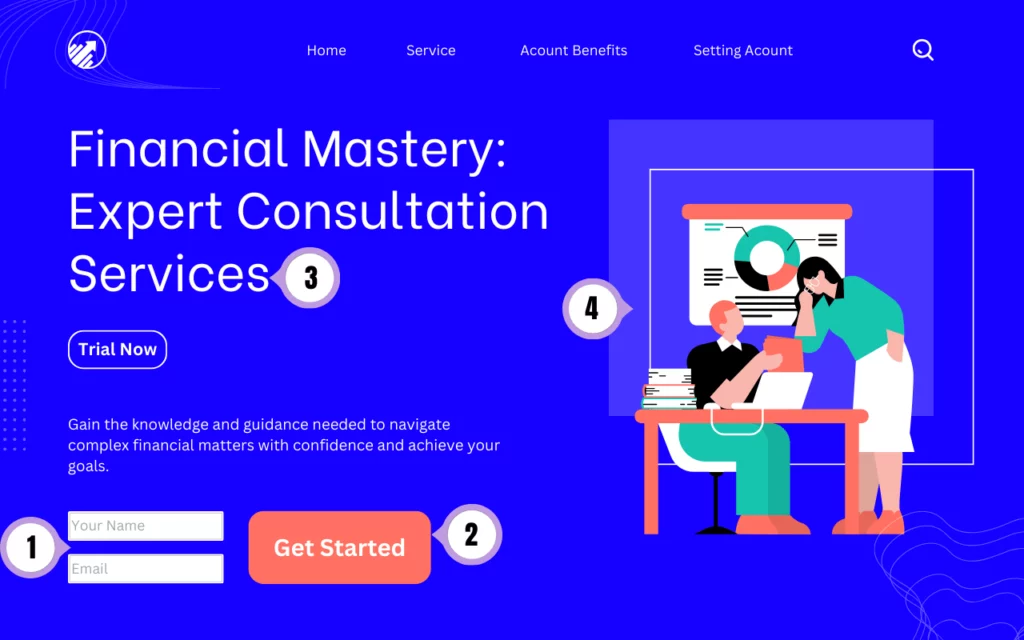
Moreover, adding dynamic content and video elements to your landing page can enhance its appeal. These features not only capture attention but also contribute to a more engaging and compelling user experience, ultimately boosting the effectiveness of your lead generation efforts.
8. Streamline your conversion tracking to enhance precision
The final step in driving down your cost per lead in Google Ads is to organize your conversion tracking. Ensure that your tracking is up-to-date by following these steps:
1. Start on the right foot: Use our step-by-step guide to ensure that your basic conversion tracking set up is in order from the get go.
2. Install Offline Conversion Tracking: Linking your CRM to Google Ads can provide deeper insights into which keywords and targeting choices yield the most cost-effective conversions. It also allows for more precise targeting. Read Google’s instructions for Offline Conversion Tracking to understand your options.
4. Set conversion values consistently: Establish conversion values, even if you're not using a value-based bidding approach. This not only supports data gathering for future decisions but also offers a comprehensive view of your account performance.
Let's Recap: Strategies to Reduce Cost Per Lead (CPL) on Google Ads
As you've discovered, reducing your cost per lead in Google Ads is not a one-size-fits-all approach but involves a combination of adjustments across your account. These tweaks should be tailored to campaigns with the most value, those with growth potential, or those needing improvement. Take a closer look at your campaigns to determine which strategies align best with your account.
To sum up, here are the we identified above for lowering your cost per lead (or cost per action) in Google Ads
- Closely monitor our ‘limited by budget’ campaigns
- Improve your Quality Score
- Structure your account for greater efficiency
- Tweak your bids
- Change your targeting
- Optimise results by trimming, pausing, or changing keywords
- Refresh the look of your landing pages
- Streamline your conversion tracking to enhance precision
Ready to maximise your Google Ads performance? Connect with our paid media experts and level up your digital strategy with us!
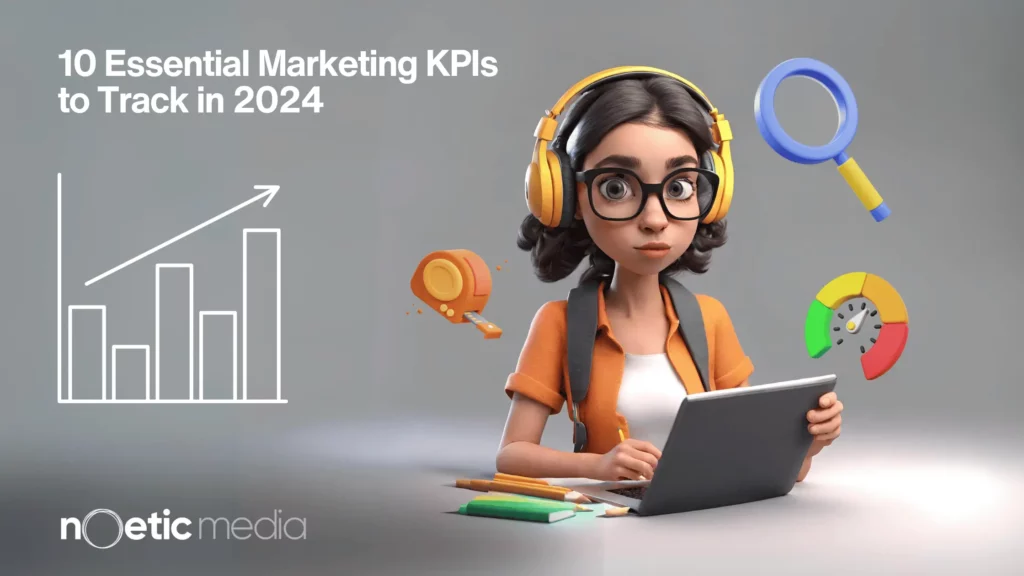
Setting and Monitoring KPIs for Digital Marketing Success
Setting and monitoring key performance indicators (KPIs) for marketing efforts often revolves around the familiar benchmarks such as
- Sales Revenue
- Number of sales-qualified leads
- Cost per acquisition
While these classic KPIs undeniably offer valuable insights into performance, a comprehensive and successful digital marketing strategy requires a broader spectrum of metrics. Beyond the conventional indicators, there exist several other marketing metrics crucial for steering your business towards digital marketing triumph in 2024.
This is where Key Performance Indicators (KPIs) come into play. KPIs are quantifiable measurements that help you evaluate your marketing strategy's success. However, with a plethora of potential KPIs to track, deciphering where to focus can be overwhelming. Hence, we have narrowed down the 10 most crucial marketing KPIs that you should monitor to ensure your marketing efforts are paying off.
1. Marketing Return on Investment (ROMI)
ROMI is a metric that helps you assess if your marketing expenses are generating profit. It reveals the financial returns gained from your marketing initiatives.
How to Calculate ROMI:
ROMI can be calculated by subtracting the marketing cost from the sales revenue and dividing the result by the marketing cost.
ROMI = (Sales Revenue - Marketing Cost) / Marketing Cost
A positive ROMI indicates that your campaigns are turning in a net profit. Understanding the ROMI of your campaigns helps manage your marketing budget effectively.
2. Cost per Lead (CPL)
CPL is a metric that determines the monetary value it takes to convert a potential prospect into a lead. It helps make strategic marketing decisions and evaluate the efficacy of your actions.
How to Calculate CPL:
CPL calculation involves dividing the total cost for each lead generation campaign by the total number of leads generated by that campaign.
CPL = Total Cost for Each Lead Generation / Total Number of Leads Generated
3. Customer Lifetime Value (CLV)
CLV is a predictive metric that ascertains the total revenue a business can anticipate from a single customer. It's a comparison metric with CAC (Customer Acquisition Cost) to determine if you're spending excessively on acquiring your customers. This form of measurement holds significant importance in comprehending the revenue attributed directly to your company's top line through various marketing efforts. Hence, it is crucial to be acquainted with modern marketing analytics, which enables you to optimize your results by integrating the performance of your paid media campaigns with data from your CRM.
CLV can be calculated by using the following formula:
CLV = (Average Sale Amount Per Customer) x (Average Number of Customer Sales Per Year) x (Average Retention Time for a Typical Customer)
4. Lead Conversion Rate
The lead conversion rate is the percentage of individuals or organisations that are transformed into opportunities after expressing interest in a product or service.
How to Calculate Lead Conversion Rate:
The lead conversion rate can be calculated by dividing the number of leads converted to opportunities in a given time period by the number of leads created in the same period.
Lead Conversion Rate = (Number of Leads Converted / Number of Leads Created) x 100
5. Organic Traffic and SEA (Search Engine Advertising) Traffic
Organic Traffic refers to the users who land on your website via unpaid search results, while SEA Traffic is the traffic generated through paid marketing avenues.
Organic traffic is the gold standard for any business utilising inbound marketing. It means that people are finding your website on their own, which is highly valuable. Conversely, SEA Traffic allows you to gain complete control over your online campaigns and increases traffic.
To measure these KPIs, you can utilise tools like Google Analytics or other data visualisation reporting tools.
6. Social Media Return on Investment (ROI)
Monitoring Social Media ROI is crucial for assessing the effectiveness of your online marketing strategy. However, it is also an area that is often ambiguous for both brands and marketers. This practice enables you to validate a campaign's value and provides insights into which platforms yield the highest returns.
Calculating Social Media ROI involves a straightforward formula. Nevertheless, it's essential to recognize that various brands, marketers, and business owners may gauge the value of social media using different metrics and measurements.
How to Calculate Social Media ROI:
Social Media ROI = (Value generated from social media – Costs of social media investment) / Costs) * 100
This difference in understanding is why the formula above begins with "value" instead of "revenue" or "profit." This approach lets you combine various metrics to determine the overall value.
Eager to understand how you can comprehensively explore social media ROI and optimize your social media investments? Check out Hootsuite's strategy to improve Social Media ROI.
7. Email Marketing Open Rate and Click-Through Rate
Email open rate is the percentage of recipients who opened an email campaign. Click-through rate (CTR) is the percentage of recipients who clicked on a link within the email. Evaluating these rates offers insights into the effectiveness of your email content and subject lines.
How to Calculate Email Open Rate and CTR:
Email Open Rate = (Number of Opened Emails / Number of Emails Delivered) x 100
Click-Through Rate = (Number of Clicks on a Link / Number of Emails Delivered) x 100
8. Website Traffic to Marketing Leads
The ratio of website traffic to marketing leads is the percentage of visitors who turn into leads. It offers a perspective on the efficacy of your marketing actions and their impact on ROI.
How to Calculate Website Traffic to Marketing Leads:
Website Traffic to Marketing Leads = (Number of Unique Visits / Number of Leads Generated) x 100
9. Customer Acquisition Cost (CAC)
CAC is the total cost of obtaining a customer. This includes costs spent on the sales process and through marketing efforts. It's a vital KPI to measure the success of a marketing campaign.
How to Calculate CAC:
CAC can be calculated by dividing the total cost of acquiring the customers by the number of new customers acquired in the time frame the money was spent.
CAC = Total Marketing Expenses / Number of New Customers Acquired
10. Backlinking Outreach
Backlinking outreach is the lifeline of your online presence—a dynamic strategy that involves reaching out to various brands, companies, or marketers to establish a valuable connection and secure backlinks from their websites to yours. This process is a fundamental Key Performance Indicator (KPI) for any robust SEO strategy, and here's why it matters: backlinks play a pivotal role in elevating your website's domain authority, a critical factor that can significantly impact your search engine rankings.
Expanding your backlinking outreach not only boosts your website's visibility but also enhances its credibility in the vast digital landscape. As you engage with diverse entities, you create a network of connections that not only strengthens your online footprint but also opens doors to new audiences.
Now, the burning question: How do you calculate backlink outreach? Well, it's a bit more nuanced than a simple mathematical formula. Effective backlink outreach involves a strategic approach:
- Identify Your Targets: Pinpoint brands, companies, or influencers in your niche whose websites could provide valuable backlinks to your content.
- Craft Compelling Pitches: Tailor your outreach messages to each target, emphasizing the mutual benefits of linking to your content. Make it clear why your content adds value to their audience.
- Utilize Outreach Tools: There are several tools available to streamline the backlink outreach process. Tools like Pitchbox, BuzzStream, and NinjaOutreach can help manage your outreach campaigns, track responses, and organize your contacts efficiently.
- Monitor and Analyze: Keep track of your outreach efforts and analyze the responses. Identify what strategies are yielding positive results and refine your approach accordingly.
Remember, the key to successful backlinking outreach lies in building authentic relationships and providing value to your potential collaborators. By doing so, you not only enhance your SEO metrics but also contribute to a more interconnected and supportive online community.
KPIs: Your Allies, Not Adversaries
Don't let the thought of tracking data stress you out. KPIs are your trusted companions in gauging marketing performance. They not only let you fine-tune campaigns but also proudly display your marketing victories—revealing what's making your business shine.
By tracking these ten marketing KPIs will provide you with actionable insights into the effectiveness of your marketing efforts. By focusing on these metrics, you can refine your strategy, maximise your ROI, and drive business growth. However, remember that KPIs are not set in stone. As your business evolves, your KPIs should adapt to reflect your changing goals and objectives.
KPIs are your secret weapon, and in the world of marketing, knowledge is pure power. Embrace it!







